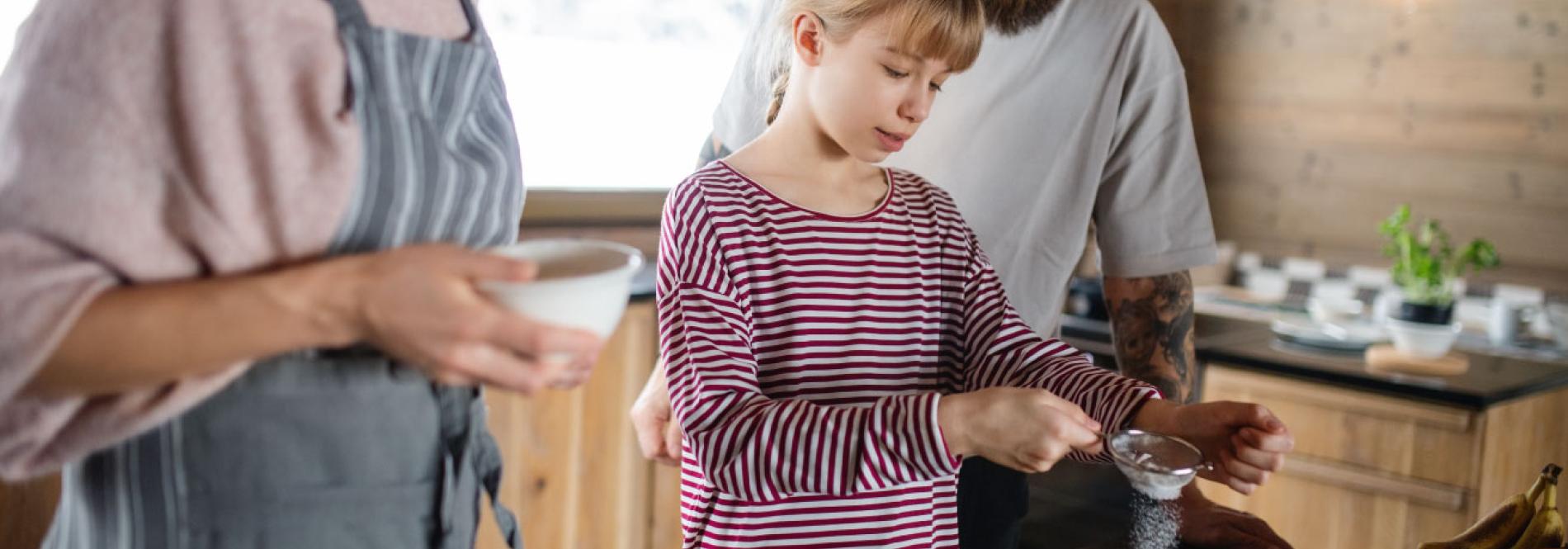
While you’re busy in the kitchen preparing your family’s holiday feast, LPEA wants to help keep your family safe and your energy bills low.
According to the National Fire Protection Agency, cooking equipment is the cause of approximately 40 percent of home structure fires. As you prepare to show off your cooking and baking skills this holiday season, remember the following tips to avoid shocks or fires:
-
Inspect all small appliances and electric cords to make sure they are in good condition before use. Don’t use appliances if cords are cracked or frayed.
-
Read the operating instructions of any appliance before use.
-
When purchasing new kitchen appliances, look for UL-Listed appliances with automatic shut-off features.
-
Never plug more than one high-wattage appliance, such as a blow dryer, microwave or toaster oven, into a single outlet.
-
Stay focused and attentive to baking, brewing, and simmering foods.
-
Make sure outlets near sinks are equipped with properly tested ground fault circuit interrupters (GFCI’s) to prevent shocks.
Always know the location of a working fire extinguisher, and know how to operate it. Cooking is also a great area to save energy. Keep these energy-efficient tips in mind while preparing your holiday meals this year:
-
Think small. Opt for a smaller appliance, such as a toaster oven or microwave, whenever possible. Efficient microwave ovens use around 50 percent less energy than conventional ovens.
-
Turn the oven or stove burners off a few minutes before your food is ready —they will remain hot enough to finish cooking the food.
-
Don’t preheat the oven unless you are baking or a recipe requires it.
-
Bake with ceramic or glass pots and pans— this will allow you to lower the oven temperature by about 25 degrees Fahrenheit.
-
Self-cleaning ovens use less energy for normal cooking because of the higher insulation levels built into them. If you own one, plan to clean it right after you’ve finished baking something so it doesn’t have to heat up a second time.
-
Don’t peek. Opening the oven door can lower the internal temperature as much as 25 percent.
-
Don’t cover oven racks with foil. This reduces heat flow and increases cooking time.
-
Make sure your pan covers the coil of your range. If you can see coil peeping out from the sides of your pan, you need a bigger pan (or a smaller burner).
-
Put a lid on it. Cover pans while cooking to prevent heat loss.
-
Plan ahead. Defrosting food in the microwave may be convenient, but it costs nothing more to defrost in the refrigerator.
-
In warmer months, try to use a grill to keep the heat outdoors, remember that the less energy wasted in heating food, the less work your air conditioner will have to do to keep your home cool.
These steps are easy to follow and come at no extra cost. Making a habit out of them will save you both energy in the kitchen and money on your electric bill.
